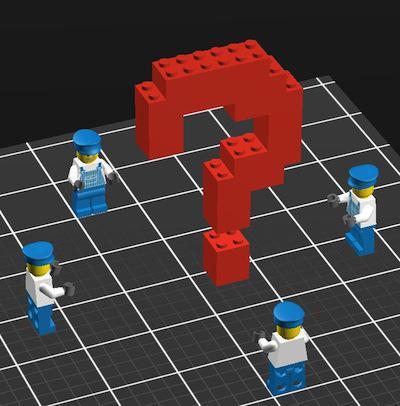
In this post I am writing a brief article to explain Constructivism in language learning, although the use of the word “language” is redundant, in as much as, Constructivism can be applied to All learning.
Constructivism is a pedagogical theory with a point of view which maintains that people actively construct new knowledge as they interact with their environment.
Everything you read, see, hear, feel, and touch is tested against your prior knowledge and if it is viable within your mental world, may form new knowledge you carry with you.
Knowledge is strengthened if you can use it successfully in your wider environment.
You are not just a memory bank passively absorbing information, nor can knowledge be “transmitted” to you just by reading something or listening to someone.
This is not to say you can’t learn anything from reading a web page or watching a lecture, obviously you can, it’s just pointing out that there is more interpretation going on than a transfer of information from one brain to another.
Words have connotations, not definitions for each and every person, along with an element of emotion and feeling.
Each person’s connotation of a word is different, and contains associations to images, symbols, tastes, smells, memories, and emotions.
When we do quizzes focused on dictionary definitions, are we not operating from an objectivist perspective?
Constructionism asserts that learning is particularly effective when constructing something for others to experience.
This can be anything from a spoken sentence or an internet posting, to more complex artifacts like a painting, a house or a software package.
For example, you might read this page several times and still forget it by tomorrow – but if you were to try and explain these ideas to someone else in your own words, or produce a slideshow that explained these concepts, then I can guarantee you’d have a better understanding that is more integrated into your own ideas.
This is why people take notes during lectures, even if they never read the notes again.
Writing a paragraph or sentence that includes a new word can be more effective in learning vocabulary than matching words with definitions.
Social Constructivism: This extends the above ideas into a social group constructing things for one another, collaboratively creating a small culture of shared artifacts with shared meanings.
When one is immersed within a culture like this, one is learning all the time about how to be a part of that culture, on many levels.
A very simple example is an object like a cup. The object can be used for many things, but its shape does suggest some “knowledge” about carrying liquids.
A more complex example is an online course – not only do the “shapes” of the software tools indicate certain things about the way online courses should work, but the activities and texts produced within the group as a whole will help shape how each person behaves within that group.
Some “shapes” or social patterns in language learning may be personal letters, business letters, internet pages, powerpoint presentations, speeches, magazines, diaries, comic books, songs, shopping lists, or telephone conversations.
Connected and Separate: This idea looks deeper into the motivations of individuals within a discussion.
Separate behaviour is when someone tries to remain ‘objective’ and ‘factual’, and tends to defend their own ideas using logic to find holes in their opponent’s ideas.
Connected behaviour is a more empathic approach that accepts subjectivity, trying to listen and ask questions in an effort to understand the other point of view.
Constructed behaviour is when a person is sensitive to both of these approaches and is able to choose either of them as appropriate to the current situation.
In general, a healthy amount of connected behaviour within a learning community is a very powerful stimulant for learning, not only bringing people closer together but promoting deeper reflection and re-examination of their existing beliefs.
Connected language learning may be a dialogue or conversation inside a chat activity, a discussion forum, or in face-to-face talking.
Online activities which include peer commenting on projects, essays, or reports are more connected forms of learning – the form of social learning that usually leads to a deeper form of learning occurring.
Constructionism or social constructionism, is highly important in the design of training and especially in the design of online training materials and is, incidentally, the founding ethos behind the Moodle Learning Management system.
It could be argued that a great deal of failure in language learning is mainly due to the design and conception of learning materials, and notably the sometimes isolating forms of learning that are used when testing and evaluating language skills.
In constructionism, the focus is shifted clearly away from teaching and placed clearly on learning.
However, in order to be able to make this shift, there needs to be a desire and the “logistics” to allow for a move from traditional roles of “teacher” to the more logical, in my opinion, role of “facilitator” – away from content and squarely on process.

